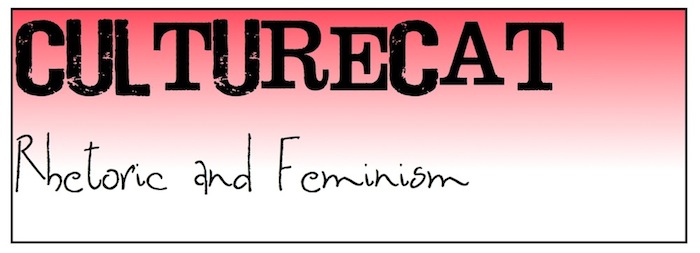A colleague of mine emailed me yesterday asking me to explain my impression of the differences among del.icio.us, CiteULike, and H2O Playlists. I thought I'd post it here as a public service, and hopefully you guys will chime in if you see other differences.
To be sure, they're all services that let you create an assemblage of links and tag them however you like and share them with others. They're all social bookmarking tools that enable you and others to make folksonomies. Here are the differences as I see them:
del.icio.us: del.icio.us is for anything. The funny, the weird, the academic, the provocative, the artistic -- everything on the web. It doesn't tout itself as an academic service. You just find links and put them there. I think lots of people just use it so that they can get to their bookmarks from any computer. But if you want to take advantage of the "social" part, you can browse del.icio.us for people and content in several ways, five of which immediately come to mind: 1.) by skimming the front page, 2.) by looking at tag clouds, 3.) by clicking on the usernames of people who posts links, 4.) by clicking on the "and XX other people" links to see who-all linked to a particular page, and, if you find people whose taste in links you like, 5.) by subscribing to those people's RSS feeds so that you're alerted when they add new links. Full disclosure: I use de.lirio.us, not del.icio.us, but they're used the same ways. The only difference is that de.lirio.us is open source.
CiteULike: CiteULike self-identifies as a service for helping academics organizing their scholarly bibliographies. You can find people and stuff on CiteULike using the same methods as on del.icio.us. The main thing that makes CiteULike different is that it's synced up with Amazon and JSTOR, as well as other indexes. It's one of those metadata miracles. From the FAQ:
The system currently supports: AIP Scitation, Amazon, American Geophysical Union, American Meteorological Society, Anthrosource, Association for Computing Machinery (ACM) portal, BMJ, CiteSeer, IEEE Xplore, IngentaConnect, JSTOR, MathSciNet, MetaPress, NASA Astrophysics Data System, Nature, PLoS Biology, PubMed, PubMed Central, Science, ScienceDirect, SpringerLink, Usenix, Wiley InterScience, arXiv.org e-Print archive, but you can post any other article from any non-supported site on the web - you'll just have to type the citation details in yourself.
Another big difference between CiteULike and other social bookmarking tools is that you can export your CiteULike bibliography to Endnote or BibTeX.
H2O Playlists: This service is provided through the Berkman Center for Internet and Society, and it has a progressive open-access, Creative Commons ethos. It's influenced by MIT's OpenCourseWare and other open education initiatives. If you watch this Flash movie about H2O, you'll see how strongly they're emphasizing teaching and learning. Users are required to publish their playlists with Creative Commons Attribution-ShareAlike licenses, which makes the whole site more collaborative. For example, on each playlist, there's a link that says "Create new playlist based on this one," so users can create derivative playlists with one click (and that's one way people can find each other in addition to the standard tag-surfing -- "tagging along," perhaps). Unlike most other social bookmarking tools, users can't tag one item, but rather they assemble lists of items and tag the lists. For example, I have this list on cyberfeminism. On the list, I have Faith Wilding's article "Where is Feminism in Cyberfeminism?" I can't tag that article, but the whole list has the tags feminism, gender, cyberfeminism, technofeminism, girlculture, cyberculture, women, femininity, and masculinity. Because playlists are meant to be kind of like syllabuses, H2O lets you break the lists into categories, like units or modules.*
Look at my playlist on Women and Gender in Open Source/Geek/Hacker Culture, for example. It has three categories. It also displays my other playlists, links to other playlists derived from mine, playlists with the same items, and playlists with the same tags. These features aren't available on other social bookmarking sites. Finally, H2O lets readers leave comments, email playlists to others, and print out printer-friendly versions of the playlists, also features that aren't available with other tools. So you can see that H2O bears little similarity to these other tools.
Notice that I haven't even bothered to address the cultural differences among the tools, the folks behind the folksonomies. On del.icio.us, for example, you can find all kinds of weird stuff, like...oh I don't know...a 30,000 calorie, 7-pound sandwich. Plus, some people have fun with the tag names, whereas on CiteULike and H2O people don't get too far afield of appropriate disciplinary terminology. Jonathan gets a little creative with it, but I get the sense that he's the exception. He, and probably some others, certainly help to diversify the tag pool. Whereas many users might have been inclined to tag the article "Rithmomachia, the Great Medieval Number Game" as "medieval history" and "mathematics," which are very common tags, Jonathan chose to tag it as "rithomomachia" and "game_theory." I think there's something to be said for that.
* Come to think of it, as I continue to work on my job materials, I believe I'll take the sketches of courses I'd like to develop and teach and put those on H2O.





